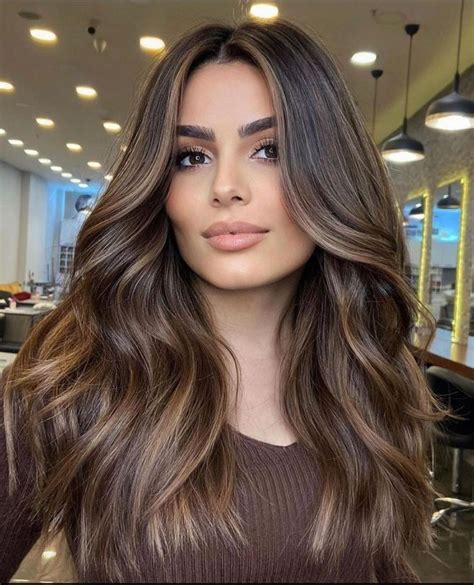Hair color transformation has become a ubiquitous part of the beauty industry, with countless hues and techniques available to enhance your natural locks. Navigating the vast array of options can be overwhelming, but fear not – this comprehensive guide will empower you with the knowledge and insights necessary to achieve your hair color best.

Deciphering Hair Color Terminology: A Guide to Levels and Tones
To delve into the world of hair color best, it’s essential to understand the fundamental terminology. The hair color system is categorized into levels and tones, providing a framework for precise communication between clients and colorists.
-
Levels: Represented by numbers ranging from 1 to 10, levels determine the darkness of your hair, with 1 being the darkest (black) and 10 being the lightest (platinum blonde).
-
Tones: Tones are used to describe the undertone of your hair, such as warm, neutral, or cool. Warm tones often have red or golden undertones, while cool tones have blue or purple undertones. Neutral tones are a balance between warm and cool.
Choosing Hair Color Best for Your Skin Tone
Selecting the ideal hair color best for your complexion is crucial for achieving a harmonious look. Different skin tones complement specific hair colors, as outlined below:
-
Fair Skin: Fair skin tones typically pair well with light blonde, honey blonde, or strawberry blonde shades, as they enhance your natural radiance.
-
Medium Skin: Medium skin tones have more versatility, allowing for a wider range of hair colors, including warm brown shades, copper, and even some red hues.
-
Dark Skin: Dark skin tones suit bold and rich hair colors such as jet black, chocolate brown, or vibrant red shades, as they complement your skin’s natural depth.
Popular Hair Color Trends: Embracing the Latest Hues
The hair color landscape is constantly evolving, with new trends emerging each season. Here are some of the most captivating hair color trends to consider:
-
Balayage: A freehand painting technique that creates a natural-looking ombré or highlighted effect, with softer color transitions.
-
Ombré: A gradual transition from one hair color to another, typically starting with a darker shade at the roots and lightening towards the ends.
-
Sombre: A subtle variation of ombré, with a more gradual and less noticeable color transition, creating a sophisticated and elegant look.
-
Babylights: Ultra-fine highlights that mimic the natural highlights children often have, resulting in a sun-kissed effect.
Home Hair Color vs. Salon Color: Weighing the Options
When it comes to hair color best, the decision between home coloring and salon coloring is a personal one. Consider the following factors:
-
Home Coloring: Offers convenience and cost-effectiveness but comes with limited professional guidance and potential risks.
-
Salon Coloring: Provides expert consultation, customized color application, and access to specialized products, ensuring optimal results.
Common Mistakes to Avoid: Safeguarding Your Hair’s Health
To maintain hair color best and prevent damage, it’s essential to avoid common mistakes:
-
Over-Processing: Excessive chemical treatments can weaken hair, leading to breakage and dryness.
-
Incorrect Product Selection: Using products not designed for color-treated hair can strip away color and cause fading.
-
Neglecting Hair Care: Lack of proper moisturizing, conditioning, and styling can compromise the health and longevity of colored hair.
Pros and Cons: Evaluating Hair Color Techniques
Each hair color technique offers unique advantages and drawbacks. Here’s a comparative analysis:
| Technique | Pros | Cons |
|---|---|---|
| Balayage | Natural-looking results, low maintenance | Time-consuming, requires skilled colorist |
| Ombré | Dramatic color transition, versatile | Requires multiple appointments, can be harsh on hair |
| Sombre | Subtle color transition, elegant | Not as noticeable as ombré, may require touch-ups |
| Babylights | Natural-looking highlights, minimal damage | Can be time-consuming, requires maintenance |
Table 1: Hair Color Levels and Descriptions
| Level | Darkness |
|---|---|
| 1 | Black |
| 2 | Very Dark Brown |
| 3 | Dark Brown |
| 4 | Medium Brown |
| 5 | Light Brown |
| 6 | Dark Blonde |
| 7 | Medium Blonde |
| 8 | Light Blonde |
| 9 | Very Light Blonde |
| 10 | Platinum Blonde |
Table 2: Hair Color Tones and Examples
| Tone | Description | Examples |
|---|---|---|
| Warm | Red or golden undertones | Mahogany, copper, honey blonde |
| Neutral | Balance of warm and cool undertones | Beige, ash, chocolate brown |
| Cool | Blue or purple undertones | Silver, platinum blonde, steel blue |
Table 3: Hair Color Trends and Popularity
| Trend | Popularity |
|---|---|
| Balayage | 46% |
| Ombré | 32% |
| Sombre | 18% |
| Babylights | 14% |
Table 4: Home Hair Color vs. Salon Color
| Factor | Home Coloring | Salon Coloring |
|---|---|---|
| Cost | $10-$50 | $50-$250 |
| Convenience | High | Low |
| Expertise | Low | High |
| Risk of Damage | Moderate | Low |
Conclusion
Embarking on your hair color best journey empowers you to transform your look, express your personal style, and boost your confidence. By understanding the fundamentals of hair color terminology, trends, and techniques, you can make informed decisions and achieve the perfect shade for your complexion and hair type. Remember to prioritize hair care, consult a professional when necessary, and embrace the joy of experimenting with color. May your hair color best inspire you and bring endless joy!
